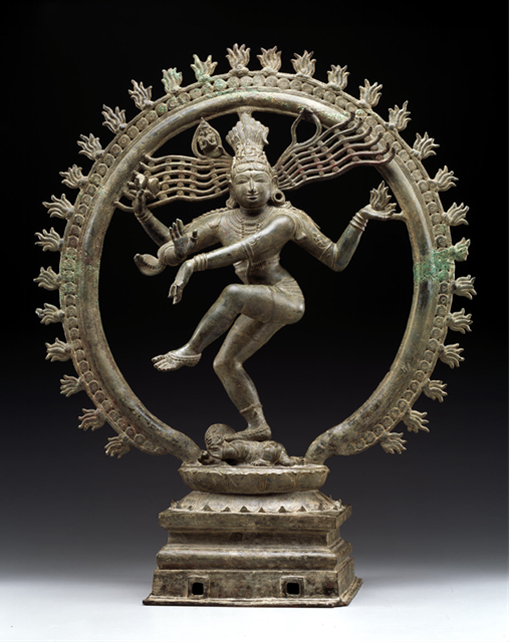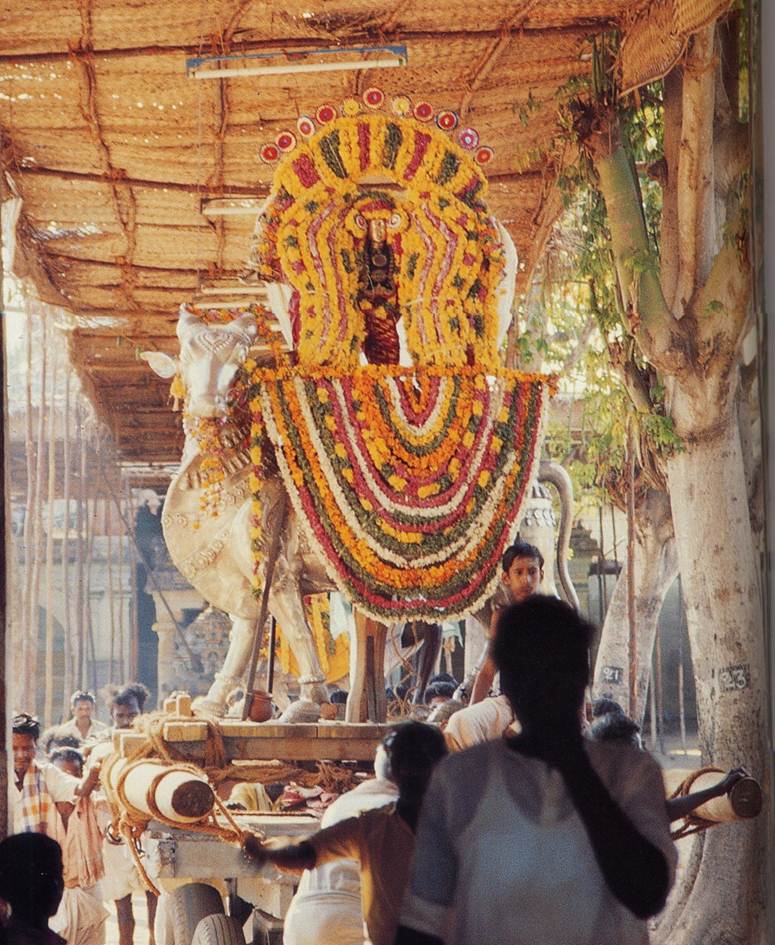Earlier this week, Loryn told us all about how sacred Indian bronze sculptures were made. Using the lost-wax process, each beautiful bronze sculpture was created as a one-of-a-kind work of art. Now that we know how they were made, I would like to explore how they were used.
.

Shiva Nataraja, Chola dynasty, 11th century, Dallas Museum of Art, gift of Mrs. Eugene McDermott, the Hamon Charitable Foundation, and an anonymous donor in honor of David T. Owsley, with additional funding from The Cecil and Ida Green Foundation and the Cecil and Ida Green Acquisition Fund, 2000.377
.
As Loryn mentioned, many bronze sculptures were originally housed in Hindu temples. Each temple is dedicated to one particular god, and its primary function is to serve as the temporary home of that god. According to the Hindu belief system, an image of a god can be inhabited by the actual physical deity. This can only happen if the sculptor and priest have diligently followed the instructions of the sacred scriptures throughout the creation of the icon. This ability to invoke the actual presence of the god gives devotees the chance to interact with the deity directly. It is this interaction that lies at the heart of all Hindu worship, known as darshan, which means to see and be seen in return. This visual encounter, experienced by both devotee and deity, is the primary reason for temple visits.
The god usually resides within a stone icon installed in the inner sanctuary of the temple. But in order to make himself accessible to everyone, he is brought outside the temple walls for processions. Special sculptures are created solely for use in processions, usually made of bronze. The god leaves the inner sanctuary and inhabits the bronze sculpture after intensive ritual purification.
.

Photograph by John Guy, Shiva on his silver mount Nandi, 1993. Guy, John. Indian Temple Sculpture. V&A Publications: London, 2007.
.
The DMA’s bronze Hindu sculpture Shiva Nataraja was one of these sacred sculptures made for processions. It’s easy to identify because of the holes at the bottom of the platform. During a procession, poles were inserted into these holes so that temple attendants could easily carry it through town. Shiva Nataraja would have been so richly adorned with clothes, jewelry, flowers, auspicious unguents and liquids, that oftentimes the eyes were the only visible feature. However the eyes were also the most important feature. As long as the eyes could be seen through the heap of endless offerings, darshan could still be experienced by all present. To this day, Hindu processions are still very lively public events that involve the entire community and attract pilgrims from far and wide. Engaging all five of the senses with incense, flowers, music, dancing, hymns, and mantras, everyone actively participates in the religious festivities.
I hope this helps spark your imagination during your next visual encounter with a Hindu deity!
Hannah Burney
McDermott Intern for Teaching Programs and Partnerships
Hannah, this is great! I wish we could see our Shiva Nataraja in clothed and in action!
Loryn thank you for inspiring me with your How it’s Made series, you’re awesome!